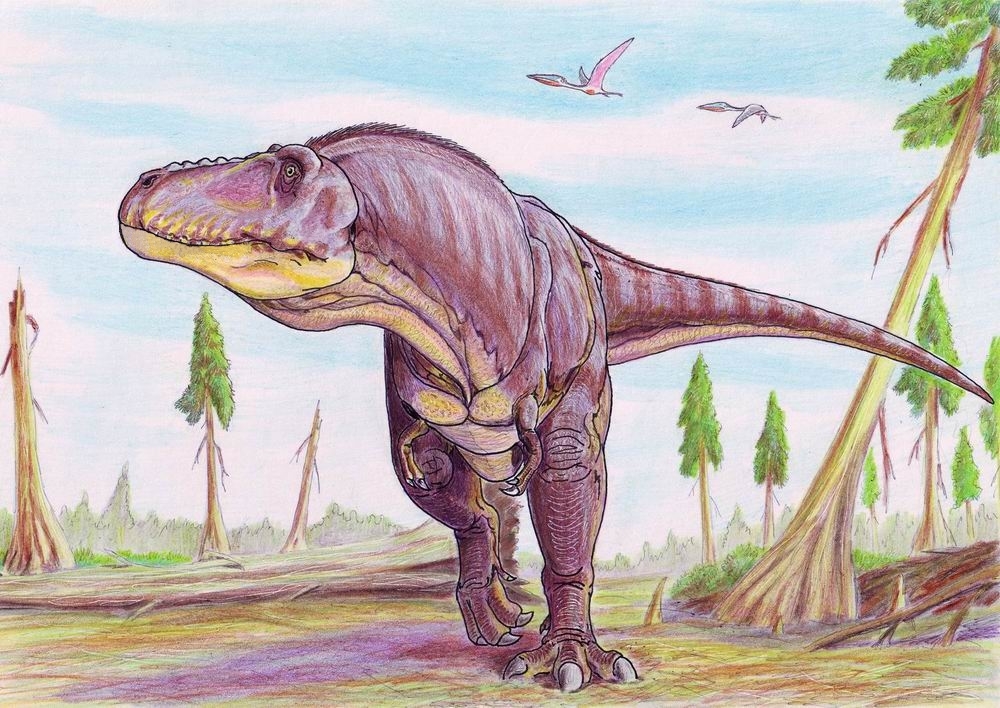 |
| The fossil remains of Alioramus altus showing it's body in outline (image Conty/Wikipedia) |
When discovered in 1976 Alioramus was given the specific name A. remotus because it was thought to be far removed from the large Tyrannosaurs like Tyrannosaurus and Tarbosaurus that lived at the same time. But a recently found Alioramus specimen has shed new light on this relationship.
Discovered in Mongolia in 2001 the new specimen was first described in 2009 and found to be sufficiently different to warrant it's own species name. It was given the specific name A. altai after the Altai mountains in southern Mongolia.
Long snouts
Both species of Alioramus differ significantly from Tyrannosaurus and other large Tyrannosaurs in being smaller, with an estimated adult size of 5 to 6 metres, but also in having a very different skull.
The skull of Alioramus was very long compared to other Tyrannosaurs, with the snout making up two-thirds of the length of the skull. The skull was also much less robust, with more and larger openings contributing to a much lighter skull, as well as being far more ornamented. A. remotus had many small crests on the top of it's snout, but A. altai had no less than 8 disitinct horns including one on each side of the head just below the eyes.
 |
| Artist's impression of A. remotus by Nobu Tamura (note nasal ridges) |
Lifestyle
The teeth of Alioramus conform to the standard dental plan for advanced Tyrannosaurs, with a set of `scraper` teeth at the front of the upper jaw, followed by larger teeth of differing size and smaller teeth at the back of the jaws. But the teeth are smaller and spread out over a larger area than in large Tyrannosaurs. Combined with a longer, lighter skull it is clear that it could not have used the same hunting tactics as T. rex with it´s bone-crunching bite.
The smaller more gracile form of Alioramus suggests that it may have been a more agile hunter, going after smaller and faster prey. Possibly filling the same ecological niche that in North-America was filled by Tyrannosaurus juveniles.
Famous relatives
Because the A. remotus specimen was very incomplete (little more than an incomplete skull and some foot bones) the position of Alioramus within the Tyrannosaur family was long unsure. The geographical age of the specimen mean that it couldn't be a basal Tyrannosaur like Dilong or Guanlong, but it was generally considered to belong to a completely different (and otherwise unknown) branch.
Because the much more complete A. altai fossil showed it to have many features in common with advanced Tyrannosaurs it could now be placed in the Tyrannosaurinae, the group that includes Daspletosaurus, Tarbosaurus and Tyrannosaurus rex. Albeit as a different branch within that group.
This has also made it it possible to infer those parts of the Alioramus anatomy that are not present in the fossils, like a long tail and short two-fingered hands.
Shared stomping ground
 |
| Artist's impression of Tarbosaurus by Dimitri Bogdanov |
No comments:
Post a Comment